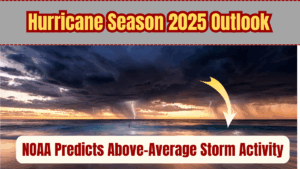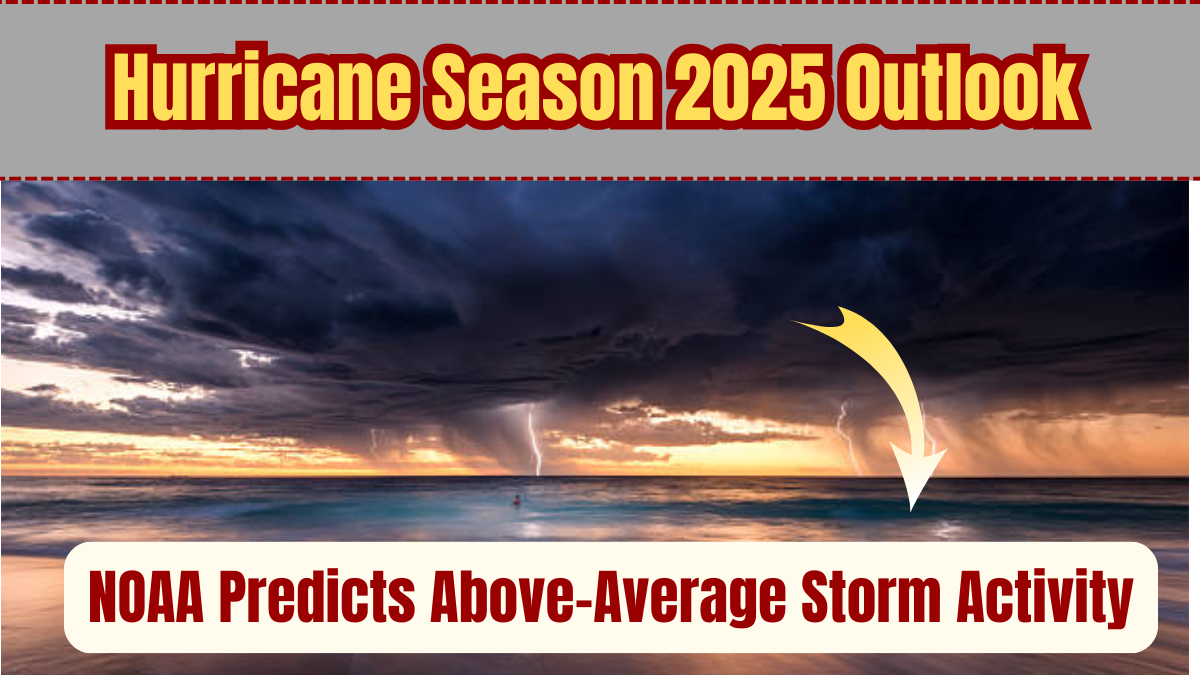The hurricane season 2025 USA forecast is raising alarms among weather agencies and emergency planners. According to the latest NOAA storm warning 2025, this year’s Atlantic hurricane season is projected to be more intense than average, with an estimated 17–21 named storms, including 8–11 hurricanes and up to 5 major hurricanes (Category 3 or higher).
This forecast is driven by several critical climate patterns, including the shift away from El Niño, warmer-than-usual Atlantic sea surface temperatures, and a reduced presence of Sahara dust—each factor contributing to increased tropical storm risks for the U.S.

What NOAA’s 2025 Hurricane Forecast Reveals
The National Oceanic and Atmospheric Administration (NOAA) released its updated outlook in May 2025, citing:
-
Increased ocean heat content in the Atlantic and Gulf of Mexico
-
Weaker wind shear, allowing storm systems to strengthen
-
Reduced El Niño effects, increasing atmospheric instability
-
High probability of landfalling hurricanes along the East and Gulf Coasts
The Gulf Coast, Florida, and the Carolinas are on high alert, while the Mid-Atlantic region is also advised to prepare early.
Timeline of the 2025 Hurricane Season
The official hurricane season in the Atlantic basin runs from June 1 to November 30, though early storms are increasingly common.
| Phase | Period | Expected Risk |
|---|---|---|
| Early Season | June – July 2025 | 1–2 named storms |
| Peak Season | August – October 2025 | High (major hurricanes likely) |
| Late Season | November 2025 | Reduced, but possible activity |
The hurricane season 2025 USA forecast identifies mid-August to early October as the most dangerous stretch, with atmospheric and oceanic conditions highly favorable for rapid intensification.
Most At-Risk Areas for Landfall in 2025
Based on current models, the most vulnerable regions in 2025 include:
-
Gulf Coast states: Louisiana, Texas, Mississippi
-
Florida Peninsula
-
Coastal Carolinas
-
Georgia and Southeast Virginia
The Caribbean islands and Puerto Rico also face heightened storm risks.
Key Preparation Tips – Hurricane Guide 2025
NOAA and FEMA urge Americans to update their hurricane plans now. Here’s a basic hurricane preparation guide for 2025:
Home Safety:
-
Reinforce windows and doors
-
Clear gutters and drains
-
Elevate electrical systems in flood-prone zones
Emergency Kit Essentials:
-
3-day supply of water and food
-
Flashlights, batteries, and a weather radio
-
First-aid supplies and essential medications
Evacuation Planning:
-
Know your evacuation zone and local routes
-
Prepare fuel and vehicle checkups in advance
-
Arrange shelter plans for pets
Insurance Review:
-
Reassess home and flood insurance
-
Keep digital and physical copies of all policies
What’s Different in 2025?
Compared to previous years, the hurricane season 2025 USA forecast suggests faster-forming storms and increased Category 4–5 storm probability, especially in the Gulf. In 2024, only two major hurricanes made landfall, but the 2025 projection is much higher.
Additionally, coastal developments and urban expansion put more lives and infrastructure at risk this year than ever before.
FAQs
What is the hurricane season 2025 USA forecast saying?
NOAA predicts an above-average hurricane season in 2025, with 17–21 named storms, 8–11 hurricanes, and 4–5 major hurricanes expected between June and November.
Which U.S. regions are most at risk this season?
The Gulf Coast, Florida, Carolinas, and parts of the Mid-Atlantic are the most vulnerable to hurricane landfalls based on current storm trajectory models.
When is the peak of hurricane season in 2025?
The peak is expected between mid-August and early October, when ocean temperatures and atmospheric conditions are most favorable for strong hurricanes.
How should I prepare for hurricanes in 2025?
Ensure your home is storm-ready, create an emergency supply kit, understand evacuation zones, and review your insurance policies for hurricane and flood coverage.
Is this season worse than last year?
Yes. The 2025 forecast shows significantly more storm activity than in 2024 due to hotter ocean temperatures, reduced wind shear, and favorable storm formation conditions.
Click here to know more.
